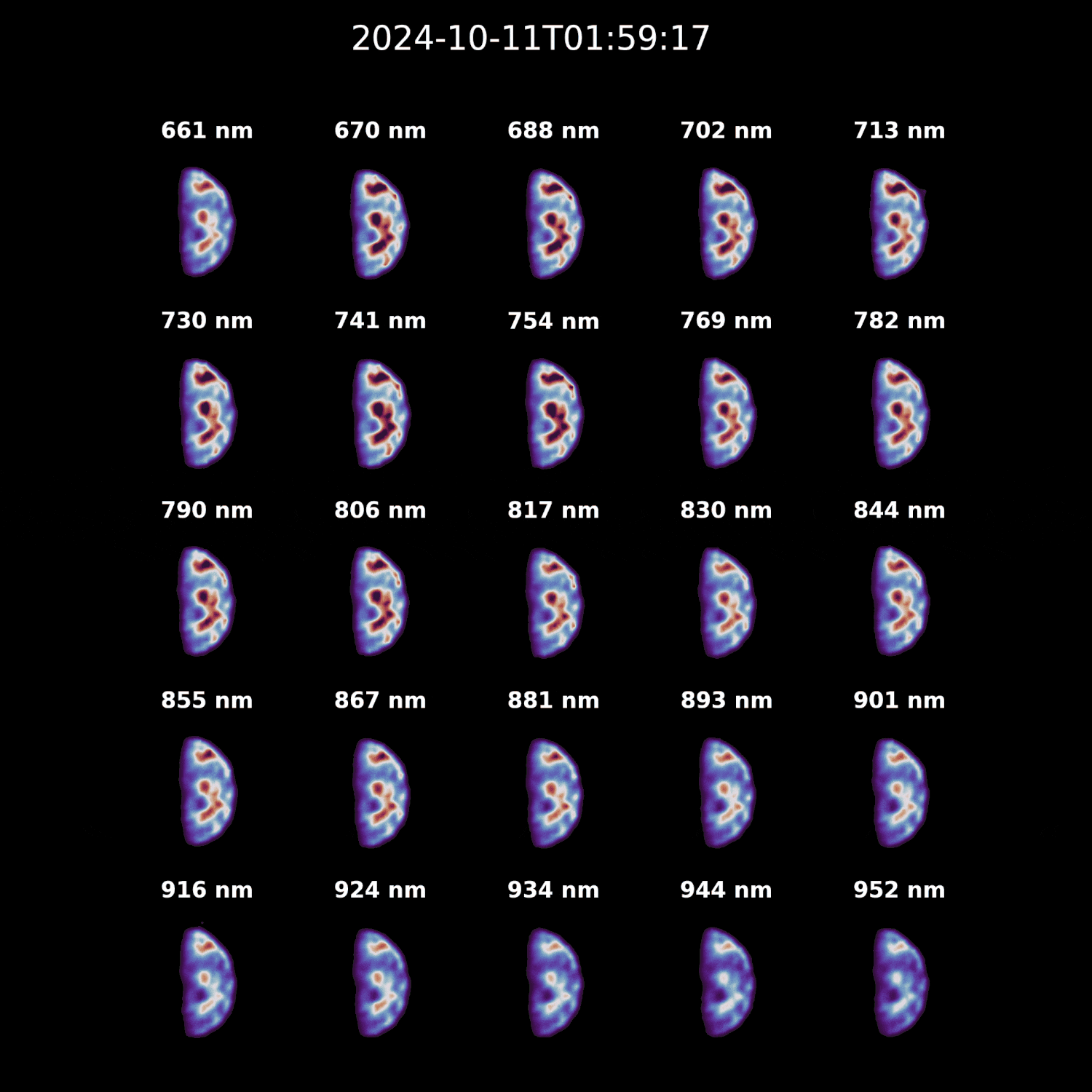

In celebration of Halloween, Hera’s HyperScout H instrument captures Earth in an eerie, spectral glow, showcasing our planet through multiple wavelengths from deep space.
HyperScout H, a hyperspectral imager on the Hera asteroid mission, detects colors beyond human vision across 25 spectral bands, from visible light to near-infrared (650–950 nm). These images, taken on October 11 between 01:59 and 18:09 UTC, highlight how HyperScout H operates by isolating these spectral bands to reveal Earth’s features.
The images are shown in false color, using the TwilightShifted palette, a color map that represents light intensity by transitioning from bluish black to purplish white and then into reddish black.
Insights From Deep Space Imaging
“This allows us to observe cloud patterns on our planet from a distance of nearly 2,000,000 km away and to test the sharpness of our data processing algorithms,” says instrument team member Marcel Popescu of the University of Craiova in Romania. “To quote Carl Sagan, all our lives are contained within these few pixels.”
Following a successful launch on October 7, 2024, Hera’s instruments were switched on for the first time as part of the spacecraft’s ongoing Near-Earth Commissioning Phase.
On Thursday, October 10 and Friday, October 11, Hera’s topside Asteroid Deck, which houses the spacecraft’s instruments, was pointed back towards our planet so that its instruments could capture their first images of Earth and the Moon from a distance of more than one million km away.
The Calibration and Anticipated Missions
“Once Hera reaches the Dimorphos asteroid HyperScout H will prospect its mineral make-up,” explains instrument principal investigator Julia de León of Instituto de Astrofísica de Canarias. “This first calibration test was an exciting experience, which showed that both the instrument and its data processing chain are working well.”
The shoebox-sized HyperScout H is the latest in a family of HyperScout imagers previously flown in terrestrial orbit for Earth observation, produced by cosine Remote Sensing in the Netherlands with ESA support.
Next March HyperScout H will also be among the Hera instruments trained on Mars and Martian moon Deimos as the mission performs a swingby of the red planet.
Marco Esposito, cosine Remote Sensing’s Managing Director, comments: “It is fantastic to have the Earth-Moon system as our first target, observing this unique relationship and capturing it spectrally as we move swiftly toward Mars.”
Hera is the European Space Agency’s first planetary defense mission, on its way to visit the first asteroid to have had its orbit altered by human action. By gathering close-up data about the Dimorphos asteroid, which was impacted by NASA’s DART spacecraft in 2022, Hera will help turn asteroid deflection into a well-understood and potentially repeatable technique.